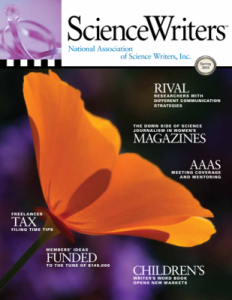By Martin Enserink
The two influenza researchers whose work has triggered a far-reaching debate on the limits of scientific freedom could hardly have handled their publicity more differently.
Ron Fouchier, who has a paper under review in Science, welcomed reporters to his lab at Erasmus MC in Rotterdam last month, donned a lab coat for the cameras, and helped the center’s spokespeople prepare statements in Dutch and English on why he created what he believes to be a virus with the potential to cause a pandemic and why the full details of the study should be published. He landed on the front page of the New York Times, was attacked by bloggers, and news anchors mangled his name. (It’s foo-SHAY.) But Fouchier had a point to make: He had nothing to hide.Yoshihiro Kawaoka, meanwhile, appeared to be in hiding. He didn’t, as reporters say, respond to multiple requests for comment, including for this story; it was hard to know whether he was at his lab at the University of Wisconsin (UW), Madison, where his H5N1 study now under review at Nature was done, or at the University of Tokyo’s Institute of Medical Science, where he has an appointment as well. As a result, he literally managed to stay out of the picture. News stories focused on Fouchier; many didn’t even mention Kawaoka.
Some scientists say that may reflect different personalities and backgrounds. Fouchier is known to be open and direct — to the point of bluntness — “a wonderful Dutch quality,” says mathematician Derek Smith of the University of Cambridge, in the United Kingdom, a close friend and coauthor of many of Fouchier’s papers. Kawaoka’s silence bespeaks his origins, says his former mentor, Robert Webster of St. Jude Children’s Research Hospital, in Memphis, Tenn. “In Japanese culture, saying nothing is often a more powerful statement,” Webster says. “You smile and take it.”
Others aren’t so sure. “I think Kawaoka has lived in the U.S. long enough to have lost his Japanese roots,” says virologist Andrew Pekosz of Johns Hopkins University, in Baltimore, Md., “and he’s not shy in public.” Daryl Buss, the dean of UW Madison’s veterinary school, says Kawaoka doesn’t want to imperil his paper in Nature by discussing it. But he concedes that, as Fouchier did, Kawaoka could discuss the background of the work or the policy questions without jeopardizing publication. “He has chosen not to do that,” Buss says.
Their media strategies aside, most scientists say they’re more struck by the commonalities between Kawaoka, 56, and Fouchier, 45. Both are “truly top-notch, fantastic scientists,” Pekosz says. They’re also competitors and rivals, he says — “in a healthy way.” Both have taken a strong interest in avian influenza, and at meetings they often speak in the same session. “Their labs both run the gamut from amino acids to transmission between humans, which is fantastic,” Pekosz says. “It’s no accident” that both came up with major new findings on H5N1 transmissibility, Smith adds.
Extremely hard workers, both have built up impressive publication records. Fouchier’s name is on almost a dozen papers and reviews in Science and a few in Nature; for Kawaoka, it’s the other way around. For both, the controversy swirling around their recent work has made the past few months a particularly intense period. “All these different opinions create a lot of stress,” says Fouchier’s collaborator, Adolfo García-Sastre of Mount Sinai School of Medicine, in New York City. Kawaoka “is wiped out, I gather,” Webster says.
Kawaoka, who grew up in Kobe and trained at Hokkaido University, learned the ropes at Webster’s lab in Memphis, where he worked for 14 years. (“My best postdoc ever,” Webster says.) He started his own lab in Madison in 1997 and soon became recognized as a scientific superstar; the university invested millions in a new lab and additional staff to retain him when he received a grandiose offer from the University of Pittsburgh in 2004. Kawaoka frequently travels to Tokyo to keep his group there running and lure the brightest Japanese students to Madison. Rather than wearing him out, the 16-hour trips across the dateline “seem to energize him,” Buss says.
Fouchier, meanwhile, has built his career at Erasmus MC under the wings of Albert Osterhaus, a prolific virologist who has worked on a plethora of viruses. So far, Osterhaus has been the lab’s omnipresent spokesperson; the current controversy marks the first time Fouchier has stepped into the global limelight.
Both Kawaoka and Fouchier have a long history with H5N1. In 1997, Osterhaus’s lab discovered that a 3-year-old boy in Hong Kong who had died of pneumonia was infected with the virus — the first recorded human infection with the avian strain, which was wreaking havoc in Hong Kong poultry at the time. Kawaoka spent several months in Hong Kong as part of a team studying the outbreak, which eventually killed 18 people. Fouchier, who had been mostly working on HIV, switched to influenza soon after.
Since then, H5N1 has infected birds in dozens of countries and killed more than 500 people. And Fouchier and Kawaoka have been fascinated by what Pekosz says is “the most pressing question” about the virus: Could it become transmissible between humans — in other words, does it have the potential to become pandemic — and if so, what does it take?
Fifteen years after that first encounter, their unpublished studies may begin to answer those questions.
Science writer Martin Enserlink is a contributing editor for Science.
“In the Eye of the Storm, Two Rivals, Two Strategies,” Science, Jan. 6, 2012.




